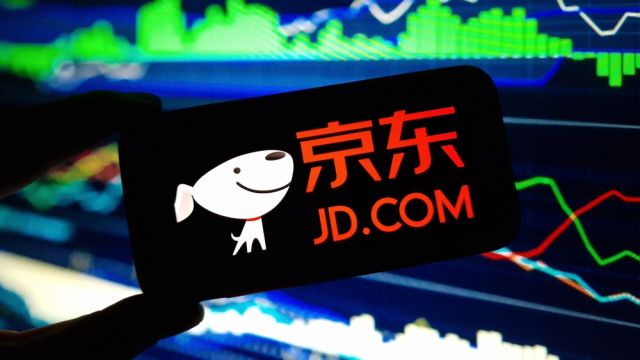Wealthfront IPO: how to trade Wealthfront shares

Create an account Open a demo account
When is the Wealthfront IPO date?
The Wealthfront IPO has been a matter of speculation for years, but it finally moved into motion in 2025 when the California-based fintech filed confidentially for a US listing. The move came after a turbulent few years for the company: a proposed $1.4bn acquisition by UBS in 2022 that ultimately collapsed, a reset of fintech valuations during the 2022-2023 tech downturn, and then a recovery in investor appetite for digital finance IPOs in 2024-2025.
By filing in June 2025, Wealthfront positioned itself as one of the first major robo-advisor platforms to test public markets in the new cycle. According to filings, Wealthfront plans to list on the Nasdaq Stock Market under the ticker WLTH (source: Reuters).
Current expectations
While Wealthfront has not disclosed its target share price or share count, reports suggest a valuation range of $8-10bn is under consideration, based on ~$309m in annual revenue for the fiscal year ending January 2025 and nearly $88bn in assets under management (AUM). The exact Wealthfront initial public offering date has not yet been set, but analysts expect a launch date in late 2025 or early 2026, subject to SEC review and market conditions.
Why IPO now?
- Failed UBS deal as catalyst: the abandoned sale in 2022 underscored Wealthfront’s need for an independent capital markets strategy.
- Improved IPO market: after a freeze in 2022-2023, the US IPO market for fintechs has reopened, with investors showing interest in scaled, profitable names.
- Revenue diversification: Wealthfront now derives most of its income from cash management, not just advisory fees, which demonstrates business model resilience.
- Liquidity for investors: venture backers who have supported Wealthfront since its early days are seeking a return.
What is Wealthfront?
Wealthfront is a US-based robo-advisor and digital wealth platform founded in 2008. Originally launched under the name kaChing, it rebranded as Wealthfront in 2011, becoming one of the earliest players in the automated investing space.
The company was designed to democratise wealth management. By offering low-cost, automated portfolios built from ETFs, alongside tax-loss harvesting and financial planning tools, it aimed to bring institutional-grade services to everyday retail investors.
Evolution and growth
Wealthfront’s growth came in waves:
- In the early 2010s, it rode the wave of post-crisis investor appetite for low-cost, passive investing.
- It attracted attention with its 0.25% management fee, substantially lower than traditional advisors.
- By 2016, it had added features such as direct indexing, automated tax-loss harvesting, and 529 college savings plans.
- In 2019, it pivoted further into cash management, launching Wealthfront Cash Account, which today drives most of its revenue.
By 2025, Wealthfront reported more than 1.3m clients and nearly $88bn in AUM, making it one of the largest independent robo-advisors in the US.
Competitive landscape
Wealthfront competes against both digital-only peers such as Betterment and hybrid offerings from incumbents such as Charles Schwab (Schwab Intelligent Portfolios) and Vanguard. The difference: Wealthfront remains fully digital, with no human advisors. It positions itself as a technology company first, appealing to younger, digitally native investors who prefer self-directed tools.
Key milestones
2008 – Founded as kaChing.
2011 – Relaunch as Wealthfront.
2014-2016 – Rapid growth, introduces direct indexing and advanced planning tools.
2019 – Launch of Wealthfront Cash Account.
2022 – Proposed $1.4bn acquisition by UBS, later cancelled.
2025 – Files confidentially for IPO with $309m revenue and $88B AUM.
How does Wealthfront make money?
Wealthfront’s revenue model has evolved. Initially dependent on advisory fees from AUM, it now earns most income from cash management and interest spreads.
| Revenue stream | Description |
|---|---|
| Advisory fees (AUM-based) | Wealthfront charges a 0.25% annual fee on assets under management. While once the primary revenue stream, it is now a smaller proportion of total revenues. |
| Cash management | The Wealthfront Cash Account has become the company’s largest business line, accounting for ~70-75% of revenue in 2024-2025. Wealthfront partners with banks, earning a share of the net interest margin. This shift insulated Wealthfront when markets dipped, as deposits grew even when equity markets were volatile. |
| Credit and lending | Wealthfront offers portfolio lines of credit and borrowing against investment accounts. Interest spreads add incremental revenue. |
| Cross-selling and product extensions | The company has experimented with add-on modules for planning, bond ladders, and fractional shares. These help deepen client engagement and revenue per user. |
What might influence the Wealthfront stock price?
The Wealthfront stock price after IPO will depend on a mix of macroeconomic conditions, company fundamentals, competition, regulation, and investor sentiment. As a digital-first platform straddling wealth management and fintech banking, its valuation will reflect both the robustness of its underlying business model and how investors view the wider fintech sector at the time of listing.
Macroeconomic and sector trends
Market cycles play a decisive role in wealth platforms. In bull markets, assets under management (AUM) rise and fees expand naturally, while bear markets can depress both asset values and net inflows. Interest rates add another dimension: Wealthfront now derives most of its revenue from its cash management business, which benefits when deposit yields are high.
Elevated rates in recent years have bolstered margins, but a rate-cutting cycle could compress spreads. Investor appetite for fintech IPOs also ebbs and flows. When peers like Robinhood or SoFi are trading well, fintech valuations tend to expand; when sentiment turns risk-off, IPO pricing becomes more conservative.
Company fundamentals
Investors will scrutinise Wealthfront’s ability to grow AUM beyond its current ~$88 billion while maintaining strong retention. Advisory fees, though now a smaller portion of revenue, remain an important metric. At the same time, net deposits in Wealthfront’s high-yield cash accounts will be a focal point, since they account for the bulk of revenue.
Investors will expect the company to show operating leverage – evidence that revenues are growing faster than costs. Demonstrating progress toward consistent profitability will be a major driver of confidence in the Wealthfront stock price.
Competition and differentiation
The robo-advisor market is crowded, with direct rivals like Betterment and powerful incumbents like Schwab and Vanguard offering similar products. Fintechs such as SoFi and Robinhood also compete for the same digitally native clients. Wealthfront’s advantage has been its automation-first approach, its low fees, and differentiators such as automated tax-loss harvesting and high-yield cash management.
To sustain momentum, it must keep innovating with features that deepen client stickiness. Failure to differentiate could result in slower growth and investor caution, while successful innovation could lead to premium valuations.
Regulation and trust
As a fiduciary investment adviser registered with the SEC, Wealthfront operates in a heavily regulated space. Investors will pay close attention to compliance history and oversight of its cash management products, which rely on partner banks. Any shift in how regulators treat fintech-linked deposits could raise costs or limit growth. Data security is another critical factor – a breach could undermine customer trust quickly and hurt both user growth and the IPO valuation.
Investor sentiment and valuation scenarios
Timing will be everything. If Wealthfront debuts into a receptive market for fintech IPOs, it could attract long-only institutional investors and command strong demand. But if market volatility rises, IPO pricing may be more cautious.
In a bull case, strong AUM inflows, robust cash account growth, and clear profitability could push the valuation up. In a bear case, a weaker macro backdrop or narrowing deposit spreads could see the IPO value lower. Over time, quarterly earnings on AUM, deposit balances, and operating leverage will set the trajectory of the Wealthfront stock price.
You can keep your finger on the pulse of the markets with expert insight from our in-house analysts. Check out our news and analysis section for more.
How to trade Wealthfront shares via CFDs
When the Wealthfront listing date happens, traders will be able to speculate on its shares via contracts for difference (CFDs). CFDs allow you to capture price movements without owning the underlying shares, offering flexibility in volatile IPO markets.
How to get started
- Step 1: Choose a platformUse a broker like Capital.com to access IPO stocks and fintech names.
- Step 2: Open an accountComplete ID verification and the suitability assessment to begin trading.
- Step 3: Fund your accountDeposit capital securely by bank transfer, card, or e-wallet.
- Step 4: Track IPO detailsWatch the filing documents, price range, and anchor investor demand to gauge sentiment.
- Step 5: Place your tradeGo long if you expect Wealthfront to rally, or short if you anticipate it to fall, and consider applying stop-losses* to manage risk.
Note: the Wealthfront IPO, like all IPOs, may be volatile, especially in the early days of trading. CFDs let you act on price swings in either direction, but always apply risk management. CFDs are traded on margin, and leverage higher than 1:1 magnifies potential losses and gains. Past performance is not a reliable indicator of future results.
Learn more about contracts for difference in our CFDs trading guide. *Standard stop-losses are not guaranteed. Guaranteed stop-losses incur a fee when activated.
Which fintech and wealth management stocks can I trade?
Until the Wealthfront IPO, consider these related names:
- Robinhood (HOOD) – US retail investing platform.
- SoFi (SOFI) – fintech with wealth, lending, and banking.
- Charles Schwab (SCHW) – major brokerage with robo-advisory.
- Morgan Stanley (MS) – scaled wealth manager, owner of E*TRADE.
- BlackRock (BLK) – asset manager with growing tech-enabled platforms.
ETFs:
- Global X FinTech ETF (FINX)
- ARK Fintech Innovation ETF (ARKF)
FAQs
What is the Wealthfront IPO?
It is the planned listing of Wealthfront, a US robo-advisor with $88bn AUM and over 1.3m clients.
When will the Wealthfront IPO take place?
The company filed confidentially in June 2025. A Wealthfront IPO date is expected in late 2025 or 2026.
Has Wealthfront set a listing date?
No. A listing date has not been confirmed, but Nasdaq under ticker ‘WLTH’ is most likely.
What is Wealthfront worth?
Analysts suggest $8-10bn, with upside above $10bn in a bull case.
What does Wealthfront do?
It automates investing, cash management, tax-loss harvesting, and lending for retail clients.
Discover more upcoming IPOs
Stay informed on upcoming IPOs, market trends, and the newest trading opportunities

Jingdong IPO
